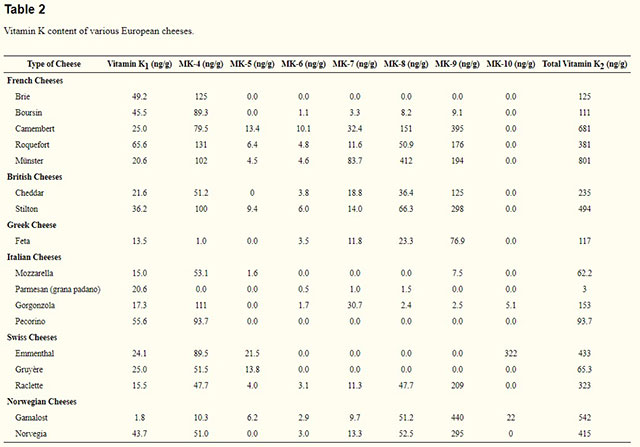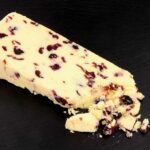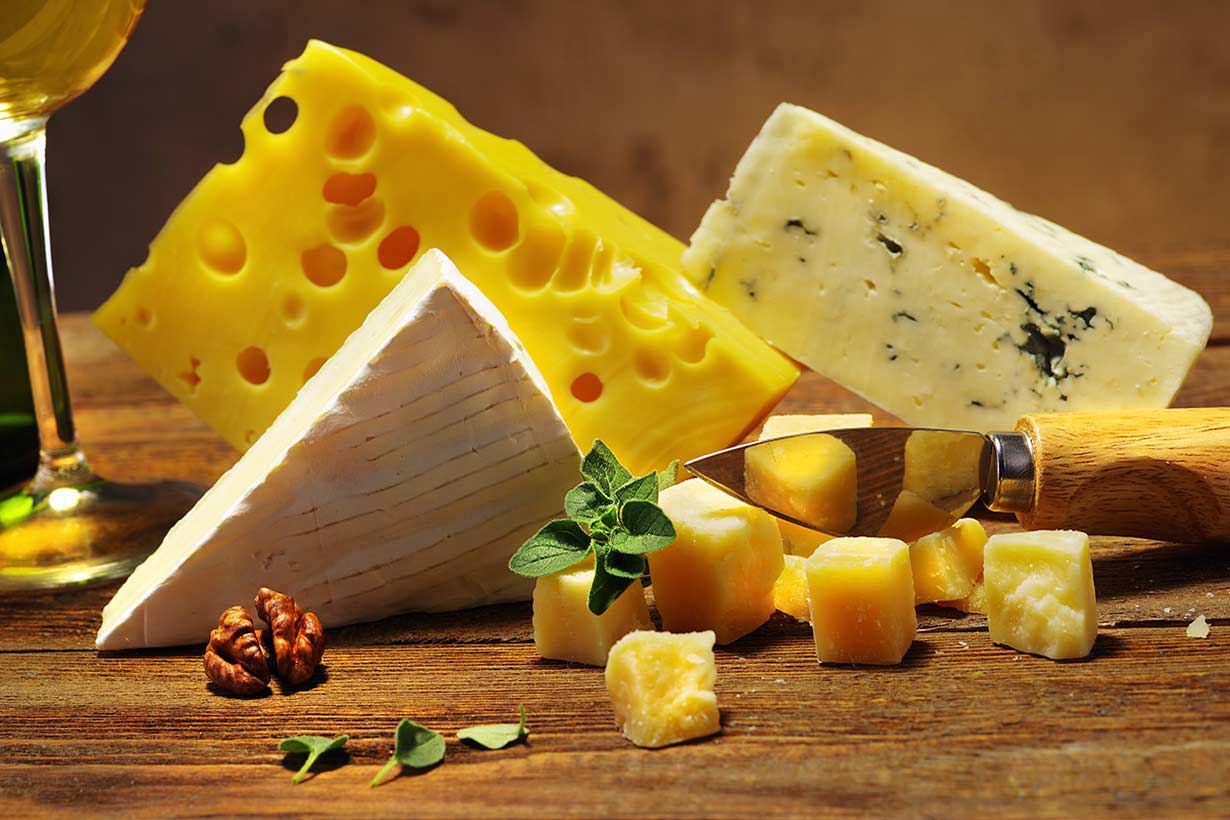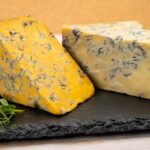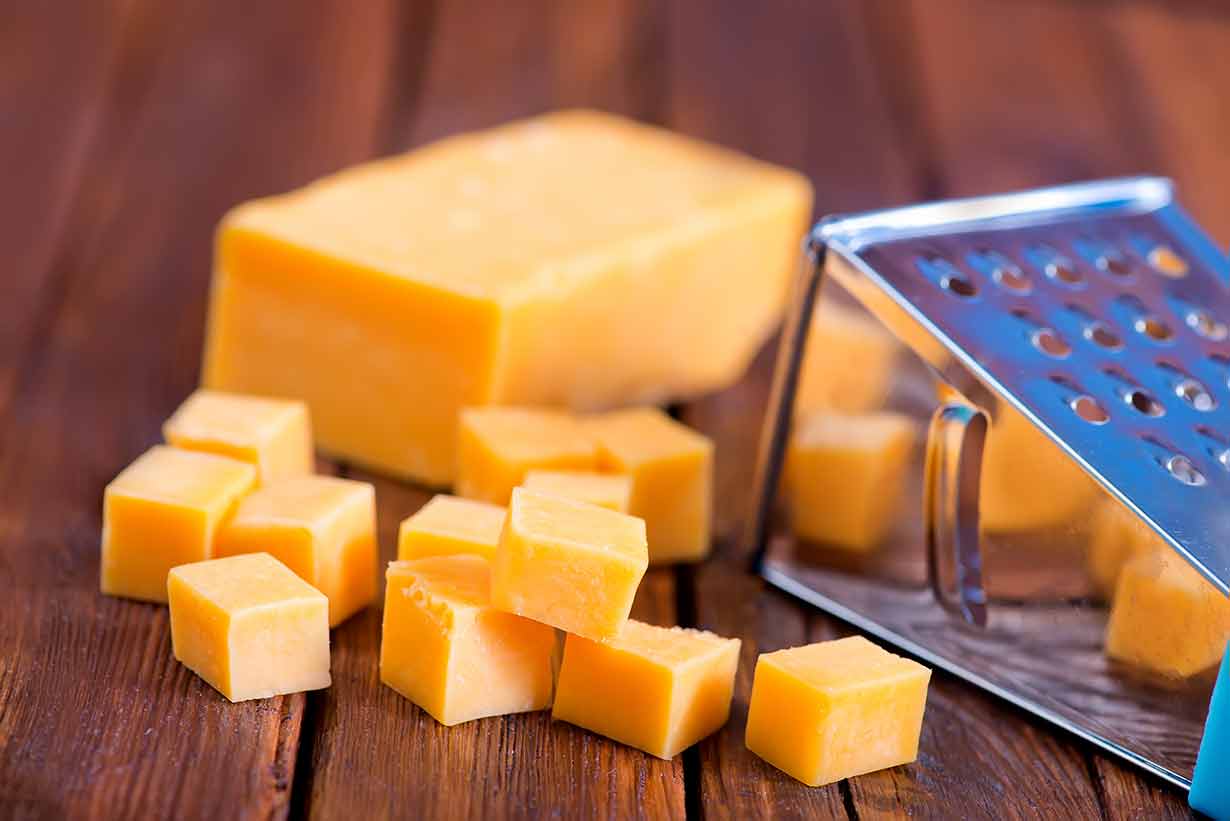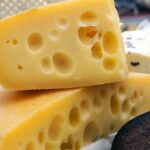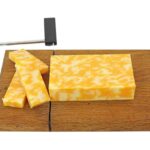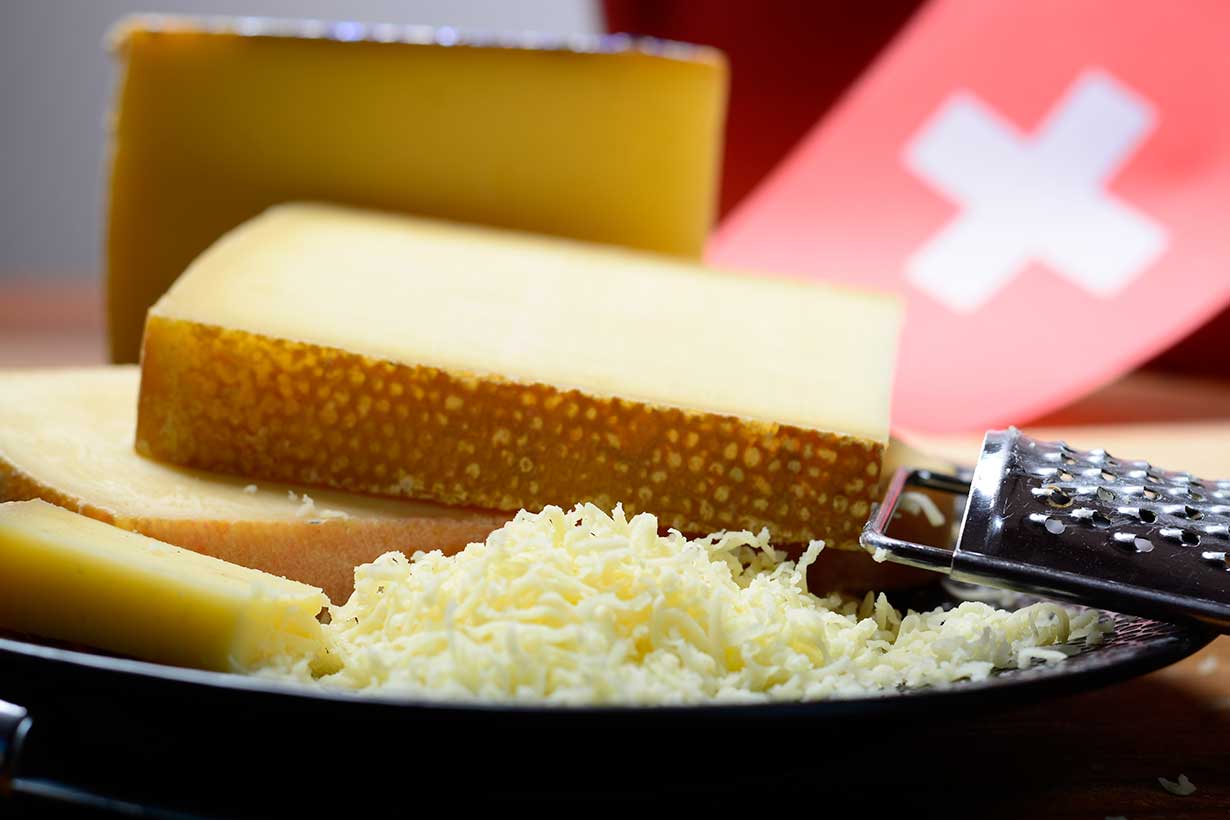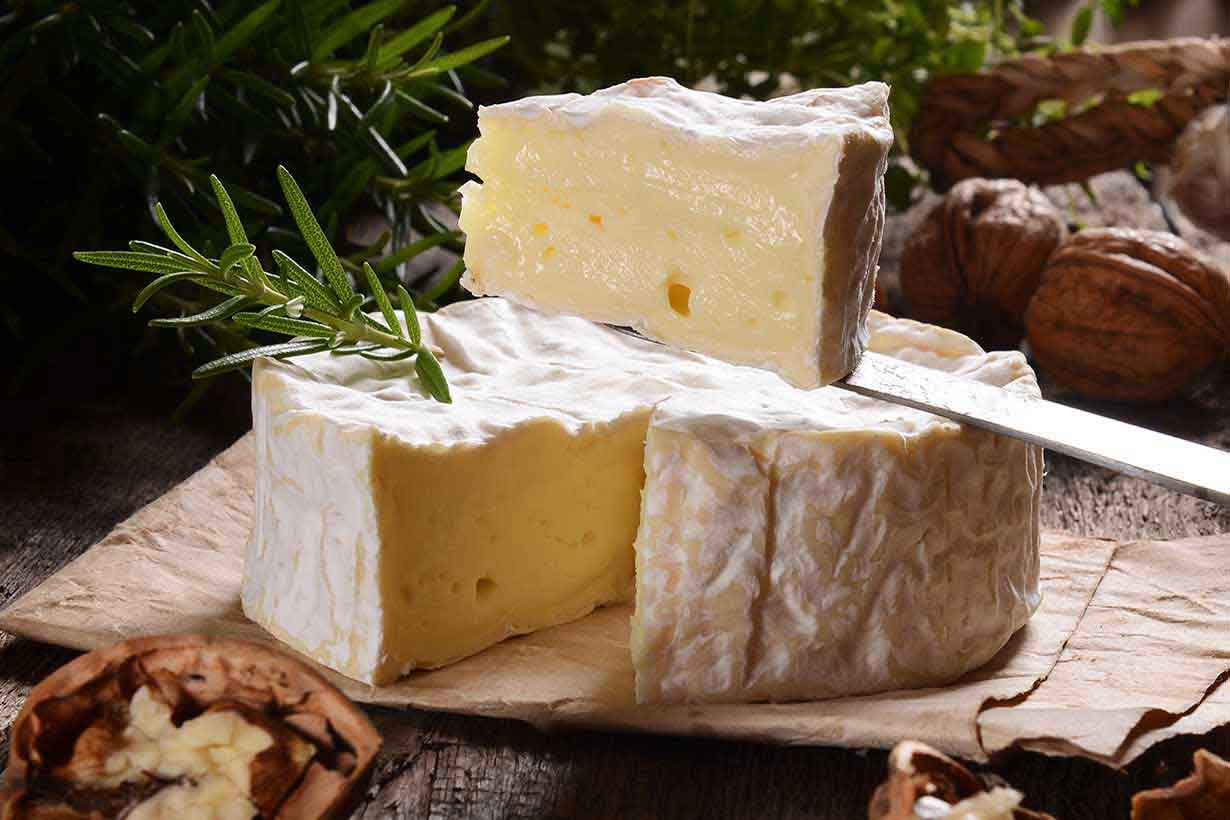Stilton is an English cheese with over 300 years of history.
Due to its quality and production, people often refer to the cheese as “the king of cheese.”
This article provides a complete guide to Stilton, its unique characteristics, production process, and nutrition benefits.
What Is Stilton?
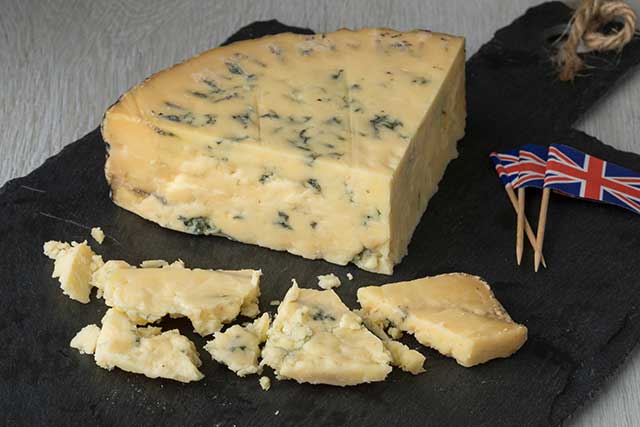
Stilton is a traditional, semi-soft English cheese that dates back to the early 18th century or perhaps even earlier.
Behind Cheddar and Wensleydale, it is one of the oldest cheese varieties from England.
On this note, the first recorded mention of Stilton was in a letter dated from the year 1722 which contained the recipe for the cheese (1).
The origins of the cheese lie in the village of Stilton, Cambridgeshire, and Stilton’s popularity soon spread throughout the country.
In recent times, Stilton production tops more than one million wheels per year, with exports going to countries around the world (2).
Types of Stilton
There are two main varieties of Stilton, and both are made locally from fresh cow’s milk;
- Blue Stilton: the blue variety is by far the most famous, and it is a semi-soft, blue-veined cheese. Blue Stilton has a robust flavor and a deep taste, but it is milder and creamier than many other blue cheese varieties. The cheese is rich, creamy, slightly salty, and very flavorful.
- White Stilton: The white variety is not as famous, and it has a semi-hard, crumbly texture. This Stilton also has a bland, milder taste, and producers typically sell it as a dessert cheese. For instance, varieties of white Stilton often contain dried fruits such as apricots and cranberries.
For this guide, we will focus on the more popular option – blue Stilton.
Stilton Has a Protected Designation of Origin (PDO)
Stilton gained a Protected Designation of Origin (PDO) in 1996, and as of 2019, there are currently only seven dairies in the world licensed to produce it.
This PDO specifies that to be called Stilton, a cheese must (3);
- Be made in the county of either Derbyshire, Leicestershire or Nottingham from locally sourced milk.
- Contain a minimum of 48% milk fat.
- Have blue veins throughout the cheese due to the use of a blue mold called Penicillium roqueforti.
- Not be pressed.
- Have a cylindrical shape and a crust.
- Taste like genuine Stilton.
Nutrition Facts
Here is the basic nutrition profile for Stilton for a small serving and per 100 grams (4);
| Per oz (28 g) | Per 100 g | |
| Calories | 110 kcal | 393 kcal |
| Carbohydrate | 1.0 g | 3.57 g |
| Fat | 10.0 g | 35.71 g |
| Protein | 7.0 g | 25.0 g |
| Sodium | 220 mg | 786 mg |
Potential Benefits
Research demonstrates that fermented dairy may have a positive impact on our health.
Additionally, the nutrient profile of Stilton offers some dietary benefits.
1) Stilton Is An Excellent Source of Vitamin K2 (MK4)
Vitamin K2 is a little-known, fat-soluble vitamin associated with some potentially significant health benefits.
For example, research suggests that it can play an important role in skeletal health by increasing the deposition of calcium to our bones (5).
Additionally, the vitamin also appears to reduce the risk of vascular damage through inhibiting arterial calcification (6).
Not many foods contain vitamin K2 in large concentrations.
However, certain varieties of cheese contain high amounts of the vitamin, and this includes Stilton.
Specifically, the MK-4 variant of vitamin K2 is purported to play a role in cardiovascular health (7).
As shown in the table below, Stilton contains large amounts of MK4 – more than most other types of cheese;
For one of the best cheese sources of vitamin K2, see this guide to Gouda cheese.
2) Stilton Is High In Vitamin A
Stilton cheese contains a high amount of retinol, otherwise known as “preformed vitamin A.”
Per 100 grams, the cheese provides 1250 IU (or 375 mcg RAE – retinol activity equivalents – of vitamin A. This is equivalent to 42% of the reference daily intake (RDI) for the vitamin (4, 8).
Among its many functions, vitamin A plays an essential role in vision and immune health (9).
3) Rich In Calcium
Stilton is an excellent source of calcium, and per 100 grams it supplies 357 mg of the mineral. This amount is equivalent to 36% of the RDI for adults (4, 10).
Calcium has a significant role in the skeletal system, and a sufficient intake helps to maintain strong and healthy bones (11).
Additionally, calcium plays a role in cardiac health and muscular contraction (12).
4) Stilton Cheese Is High In Protein
Stilton offers high amounts of protein, and it provides approximately 25 grams of protein per 100 grams (4).
However, Stilton isn’t the most protein-dense cheese option since it is also high in calories.
For anyone looking for the most protein-dense cheese, ricotta is an excellent choice.
5) Studies Suggest That Fermented Dairy Products Are Associated With Improved Health
First of all, there is no causal proof that fermented dairy improves long-term health.
However, some research shows an association between higher fermented dairy intake and positive health impacts.
For example, recent meta-analyses and systematic reviews have suggested that;
- There is moderate-quality evidence that cheese consumption lowers the risk of hypertension, and it has neutral/positive associations with cardiovascular disease risk (13, 14).
- One systematic review found that cheese is associated with a “significantly decreased risk” of colorectal cancer. However, another systematic review and meta-analysis study showed only neutral associations (15, 16).
- Higher cheese consumption is “marginally associated” with an inverse risk of stroke (17).
- A dose-response meta-analysis of cohort studies also found an inverse association between cheese intake and type 2 diabetes. However, another large meta-analysis found that cheese intake was not associated with T2D risk (18, 19).
Once again, these are only associations, and they do not prove anything.
However, the mixed evidence from such studies generally shows a neutral or positive association rather than negative findings.
How Is Blue Stilton Made?
Stilton is a unique-tasting cheese, and this may be due to its (also unique) production method.
For one thing, the cheese is entirely hand-made.
The video below explains how cheese producers make Stilton;
Here is a quick summary of this process;
- Firstly, pasteurized milk is poured into large milk vats (containers).
- The next step is to add a bacterial starter culture which will kickstart the fermentation process.
- After this, the cheesemakers add a blue mold (Penicillium roqueforti) and rennet (to thicken and clot the milk).
- The cheesemaker will then cut the cheese into cube-sized shapes by hand. Following this, the curd is left to drain (to separate the whey) for 24 hours.
- Next, the cheese is milled into small curds, and the cheesemakers mix salt into them.
- The cheesemakers then transfer the salted curds into cylindrical Stilton molds. Unlike other types of cheese, they do not press the cheese so that it stays light and airy inside.
- After fermenting in the molds for 4-5 days, the cheeses are removed and rubbed to smooth and seal all the edges, which stops the cheese from molding too early.
- The cheeses then re-enter their molds and are left to ferment for five weeks.
- After five weeks, the cheesemakers pierce each Stilton cheese with needles at regular spacing points. This injection of air into the cheese allows the blue mold to start growing outward from the center of the cheese.
- Finally, after being aged for a minimum of nine weeks, producers package the cheese ready to go to retail.
How To Eat Stilton
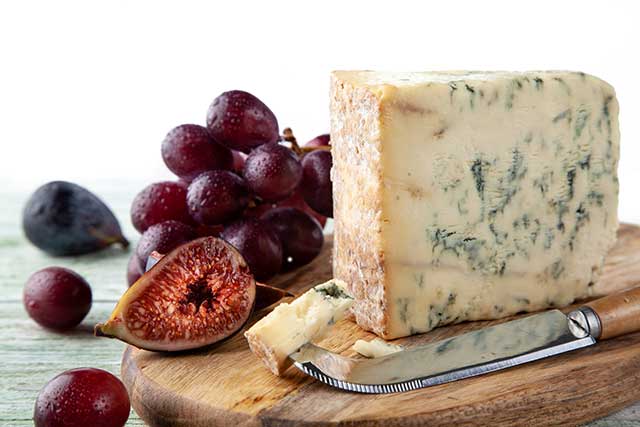
Stilton is a popular Christmas cheese, but we can enjoy it at any time of the year.
Here are some popular ways to eat it.
1) Make a Cheeseboard
Try combining Stilton with some different cheese varieties, cured meat, nuts, and fruit.
For those that like wine, red wine goes very well with this combination (and Stilton in general).
2) Make An Extra Flavorful Cream Cheese
Cream cheese has a relatively mild flavor, but crushing and mixing equal parts of Stilton into it can upgrade the taste.
3) On a Burger
Stilton on top of a burger offers extra flavor compared to the typical mild slices of cheese.
4) On Top Of Fruit
Many people enjoy eating Stilton on slices of fresh fruit such as apples and pears.
5) Melted Into a Soup Or Stew
Broccoli and Stilton soup is a popular (and tasty) recipe; find out how to make it here.
That said, melting Stilton into just about any soup or stew can instantly enhance the flavor.
For more Stilton recipe ideas, there are more than 50 recipes here.
Final Thoughts
Overall, Stilton cheese is reasonably nutritious, and it tastes delicious.
Although the cheese is not particularly nutrient-dense, it does offer a good source of protein, vitamin A, vitamin K2, and calcium.
Stilton has a creamy and flavorful taste, and this makes it suitable for a wide range of recipes.
It is also why people have been enjoying it for hundreds of years.
For more information on cheese, see this guide to the most popular cheese varieties.

